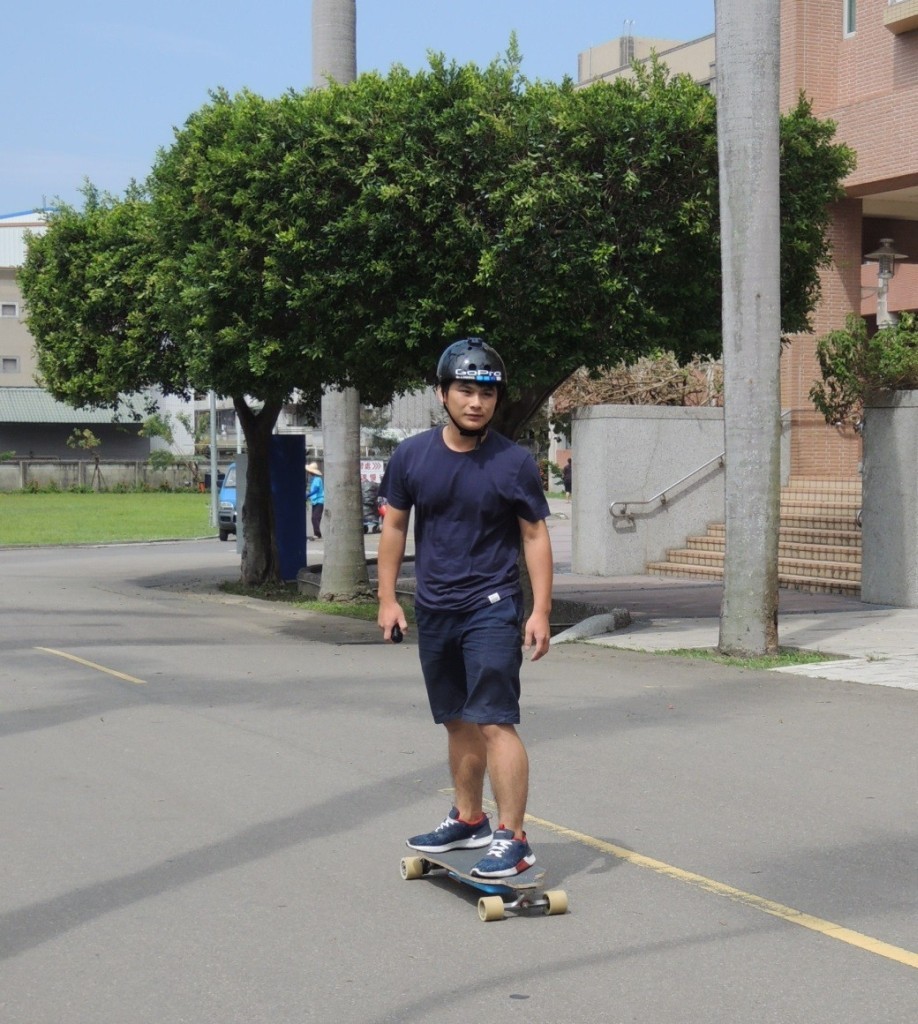| Technical Name | Electrical Skateboard Matching Body Perception | ||
|---|---|---|---|
| Project Operator | Engineering & Technology Promotion Center | ||
| Summary | A digital signal processor (DSP) is adopted for the driver of the dual motor driving system. Various peripheral circuits are designed and built into the driver to properly control the two motors. Hall sensors are used to detect rotor positions and change phases according to six step wave sequence. Acceleration and deceleration of the vehicle are achieved by PI control logics with emphasis on meeting body perception. Without mechanical braking parts, the e-skateboard brakes with motor turning into generator to slow down the vehicle and regenerate power simultaneously. Regenerating braking is achieved by controlling on and off sequence of power mosfets to turn stator windings into a boost converter and recharge the battery and slow down the vehicle at the same time. Detailed field tests show the e-skateboard has smooth start from standstill; suitable acceleration and deceleration rates; braking. This e-skateboard can reach 31.2km/hr maximum speed and cover 21.9 km range per fully charge. Both traits excel commercialized e-skateboards. |
||
| Scientific Breakthrough | The developed electrical skateboard is consisted of the following key components: a skateboard body; a dual motor driving system; a driver for dual motors; remote hand-held controller; battery and battery management system; charge controller. The vehicle body is built by bamboo to lower weights. Two motors are fixed by CNC milled aluminum fixers to the skateboard body. Belt wheels and belts combination are used for the transmission system connecting motors to wheels. Gear ratio is chosen to increase motor torque acting on the wheels. A digital signal processor (DSP) is adopted for the driver of the dual motor driving system. Various peripheral circuits are designed and built into the driver to properly control the two motors. Hall sensors are used to detect rotor positions and change phases according to six step wave sequence. Acceleration and deceleration of the vehicle are achieved by PI control logics with emphasis on meeting body perception. Without mechanical braking parts, the e-skateboard brakes with motor turning into generator to slow down the vehicle and regenerate power simultaneously. Regenerating braking is achieved by controlling on and off sequence of power mosfets to turn stator windings into a boost converter and recharge the battery and slow down the vehicle at the same time. Detailed field tests show the e-skateboard has smooth start from standstill; suitable acceleration and deceleration rates; braking. This e-skateboard can reach 31.2km/hr maximum speed and cover 21.9 km range per fully charge. Both traits excel commercialized e-skateboards. |
||
| Industrial Applicability | 1.電動車驅動 |
||
other people also saw







